
Hello friends. Today I want to share my experience from my trip to Toledo, a historic city listed as a Unesco World Heritage Site. Toledo was once the capital of Spain or more precisely, Castile. We started our journey on the high banks of the Tagus River. Some of you might know that this river is called Tagus in Spain and Tejo in Portugal, where it flows into the Atlantic Ocean near Lisbon. Interestingly the river looks quite different here compared to Lisbon. For one it’s smaller and secondly it lies within a deep valley. This geographical position provided Toledo with a significant strategic advantage throughout history.


Toledo was built along the curve of the river, making it a naturally well-defended and nearly inaccessible place. Speaking of defense on the other side of the river lies the Castle of San Servando, which protected Toledo from attacks. This castle was once a Roman fortress, then an Arab structure and now stands as a magnificent 14th century building. Unfortunately the castle is not open to the public as it is used as a youth center or conference hall. But it looks quite impressive from a distance.
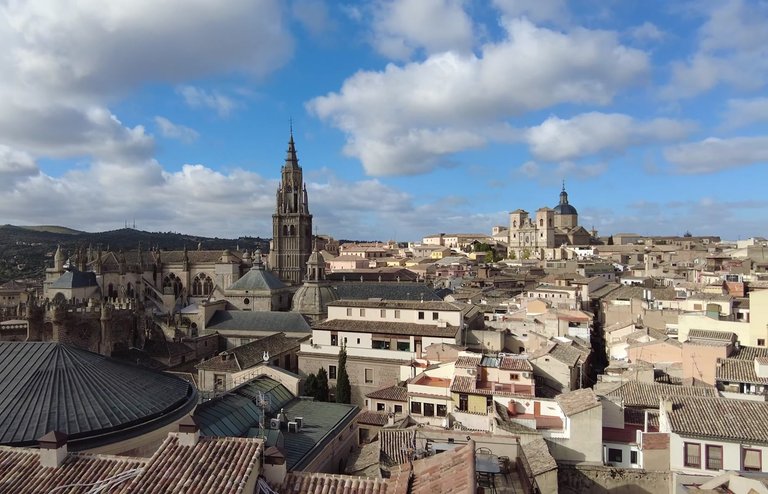
On our side of the river we visited the Alcázar, the former royal palace where the rulers of Castile once governed. However, later, Philip II moved the capital 70 kilometers northeast to Madrid. The Alcázar building is not entirely historical. It was almost completely destroyed during the Spanish Civil War with only the southern wall remaining. It was later reconstructed and now serves as a military museum. Instead of spending too much time there, I decided to focus on Toledo’s historical and architecturally significant sites.






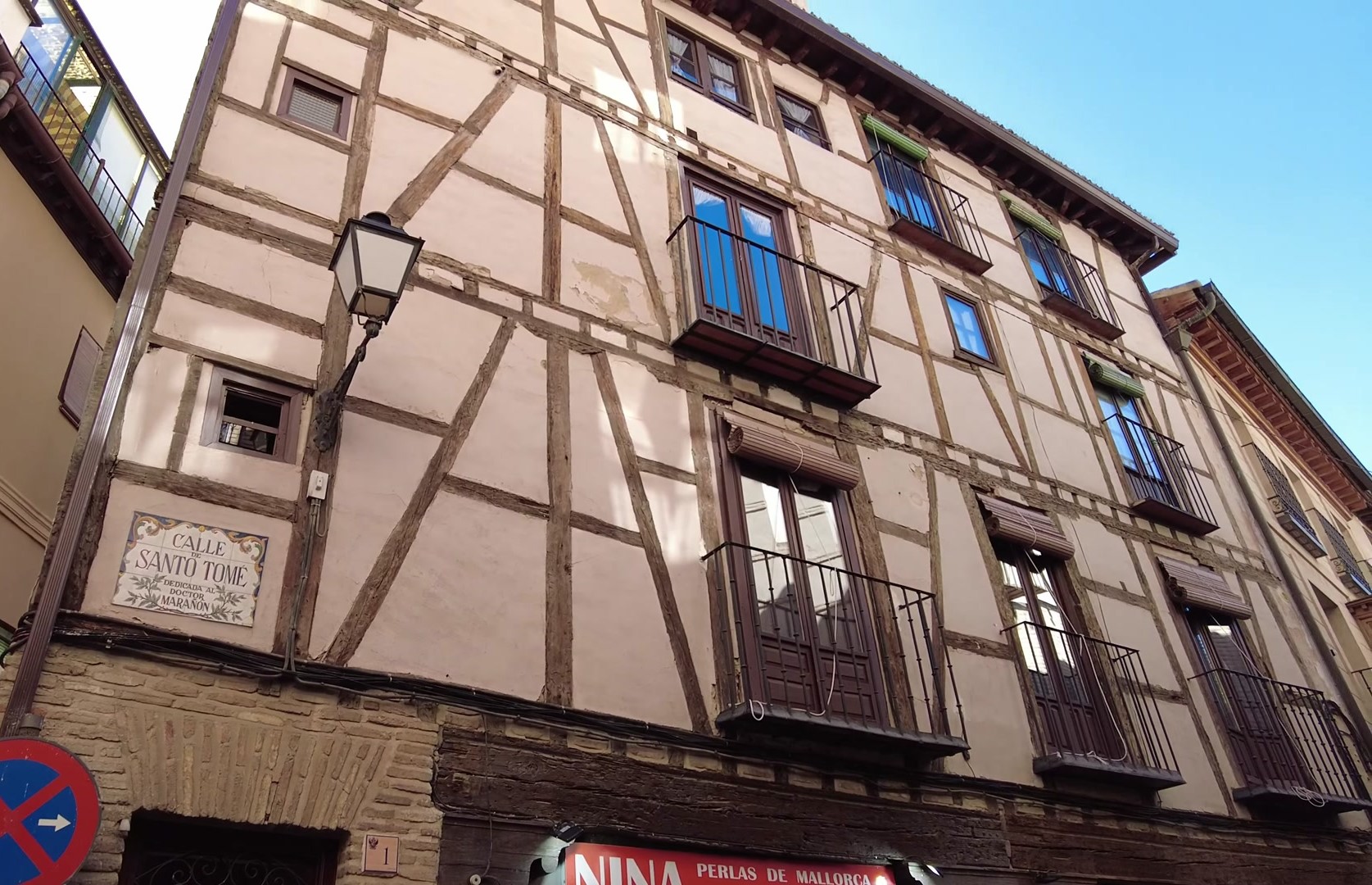


As is tradition we headed towards the city’s main square. What might its name be? If you guessed Plaza Mayor, you’d be mistaken. Toledo’s main square is called Plaza de Zocodover. This Arabic-derived name means market square. While the square itself isn’t particularly striking, the surrounding buildings are charming and when we visited, preparations for the New Year were underway. Just outside the square stands a statue dedicated to Miguel de Cervantes. Why Cervantes? The statue was erected to commemorate the 400th anniversary of the publication of Don Quixote. Toledo is the capital of the Castile-La Mancha Autonomous Region and the story of Don Quixote is closely linked to this area.

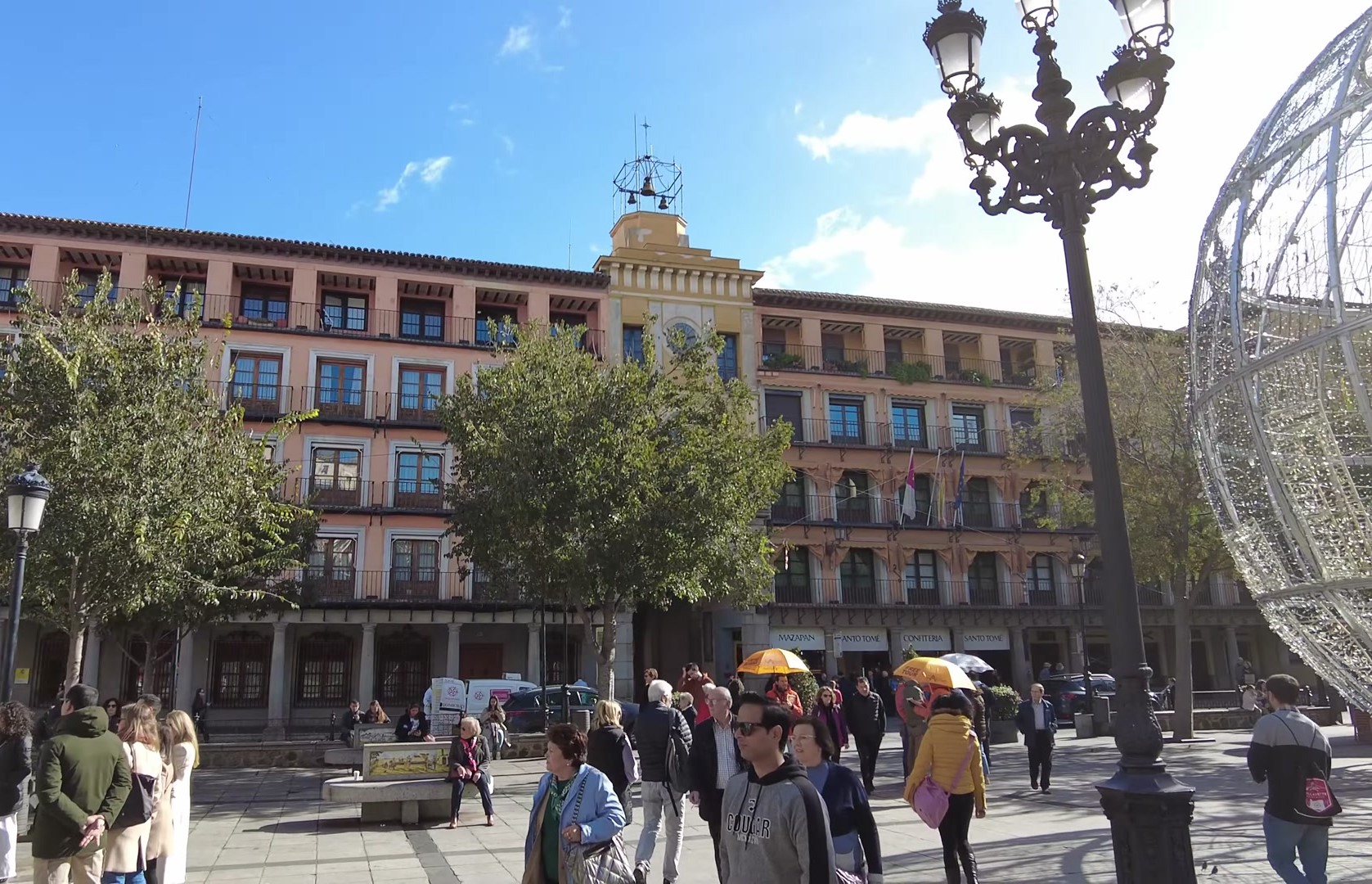





As for Toledo’s history the city boasts a vibrant past. It is first mentioned in ancient times, with the Romans establishing a settlement here. In 712 the Arabs arrived and drove out the Visigoths. Later King Alfonso reclaimed the city from the Arabs. Toledo’s history reflects the traces of four civilizations: Muslims, Christians, Jews and Romans. The city is also known as the city of three cultures. The Jewish Quarter like in many Spanish cities, holds a fascinating historical and cultural heritage.


The most prominent historical structure dominating Toledo’s skyline is the Toledo Cathedral. This cathedral is one of the most important in Spain’s Catholic Church. The current structure was built between the 13th and 15th centuries, but its origins date back to a Visigoth church. Later the Arabs constructed a mosque on this site and following the Reconquista, the Christians built the present Gothic cathedral here. The Toledo Cathedral is considered a canonical example of Spanish Gothic architecture. Today, it still functions as a place of worship but can be visited like a museum outside of mass hours.


The architectural richness of the Toledo Cathedral is really impressive. Its stained glass windows, intricate carvings, marble details and works by renowned artists such as El Greco, Caravaggio and Titian make it resemble an art gallery. El Greco’s works hold a special place in the cathedral. He is a painter closely associated with Toledo, where he created many religious masterpieces.



Toledo's history is not only reflected in its buildings but also in its fascinating stories. For instance, when the Arabs besieged Toledo, the nuns in the city made a sweet treat from almonds and sugar. Today this delicacy is known as marzipan and is one of the city’s most famous souvenirs.


Among the most popular souvenirs you can bring back from Toledo is marzipan. In addition the famous Manchego cheese from the La Mancha region is highly sought after. Shops selling these products are often labeled as museums, but they are actually beautifully designed stores rather than actual museums. Moreover Toledo is famous for its steel craftsmanship. Throughout history the city produced swords, armor and shields. Today, you can find decorative knives and swords that reflect this tradition, though the tourist versions are often low-quality and overpriced.


The hotel where I stayed is one of the oldest in Toledo. It has preserved its historical atmosphere, features a beautiful terrace and offers a view of the Toledo Cathedral. The city in general, is filled with stone buildings, narrow streets and lacks much greenery. However, this medieval charm is part of Toledo’s allure.


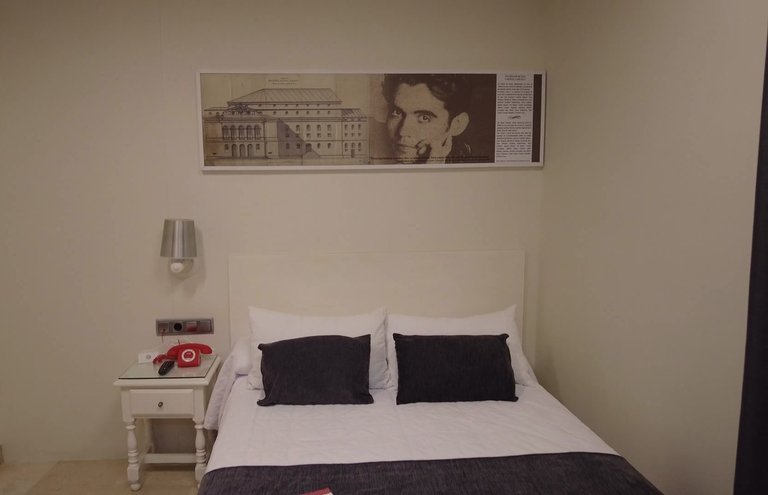
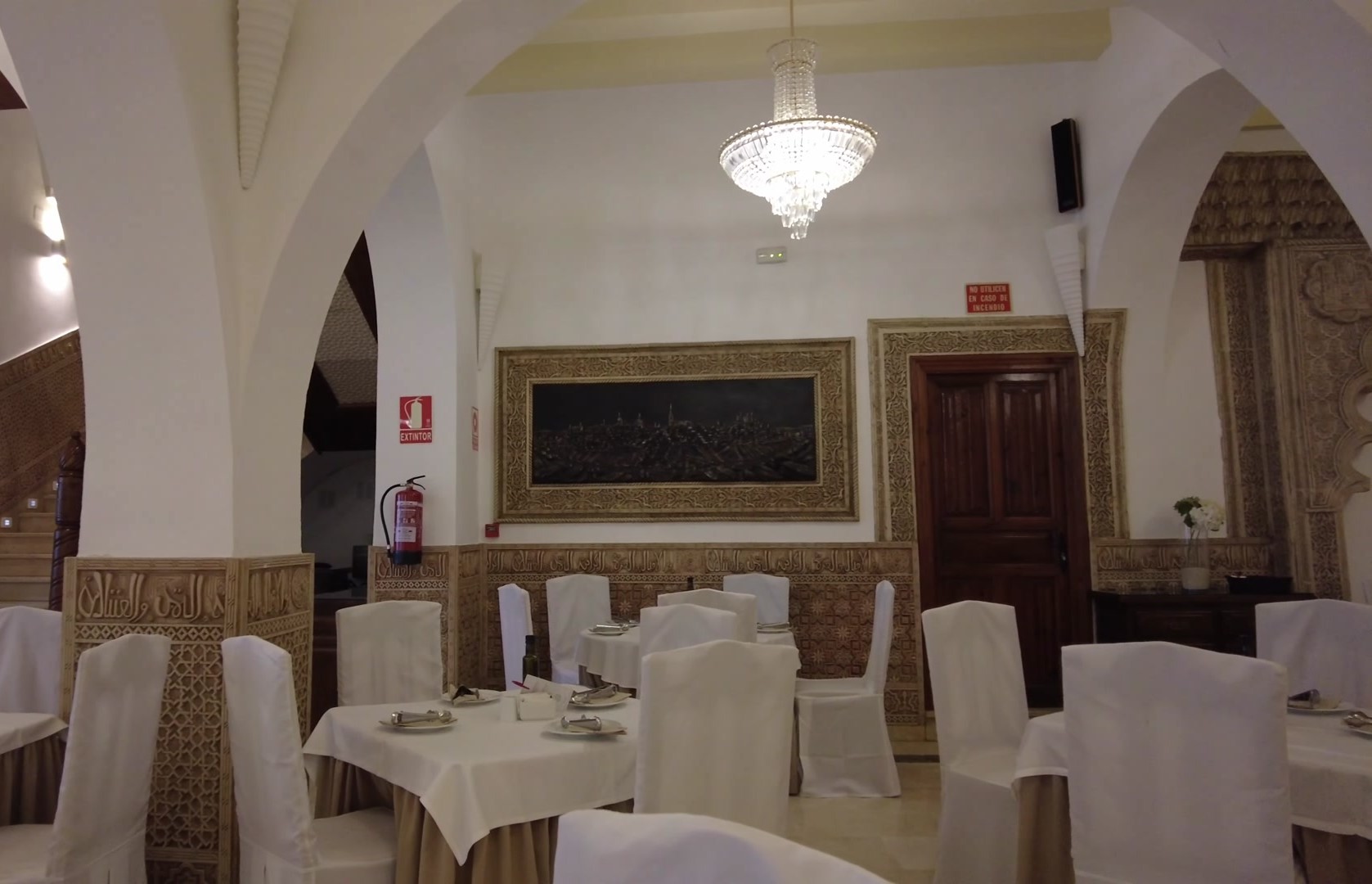

El Greco's ties to Toledo are profound. Originally from Crete, this great artist moved to Spain after his career in Italy and produced many of his works here. The El Greco Museum showcases several of his important pieces, including the Apostles series. However, the museum is not his actual residence but a reconstruction reflecting his lifestyle. The 15th century inspired structure is fascinating, with a typical Spanish style courtyard, a charming and well-preserved kitchen and various items from daily life.






And the museum hosts a small exhibit dedicated to Picasso’s secret visit to Toledo, featuring a few old photographs. For Picasso, El Greco served as something of a role model. El Greco is considered a forerunner of Expressionism and Cubism. Experts believe Picasso was inspired by his visit here to create his famous blue period works, particularly his circus-themed paintings, as a traveling circus was reportedly in town during his stay.


The museum stands out not just for its architecture or courtyard but also for its tranquil atmosphere. Admission is free on Sundays making it even more appealing.
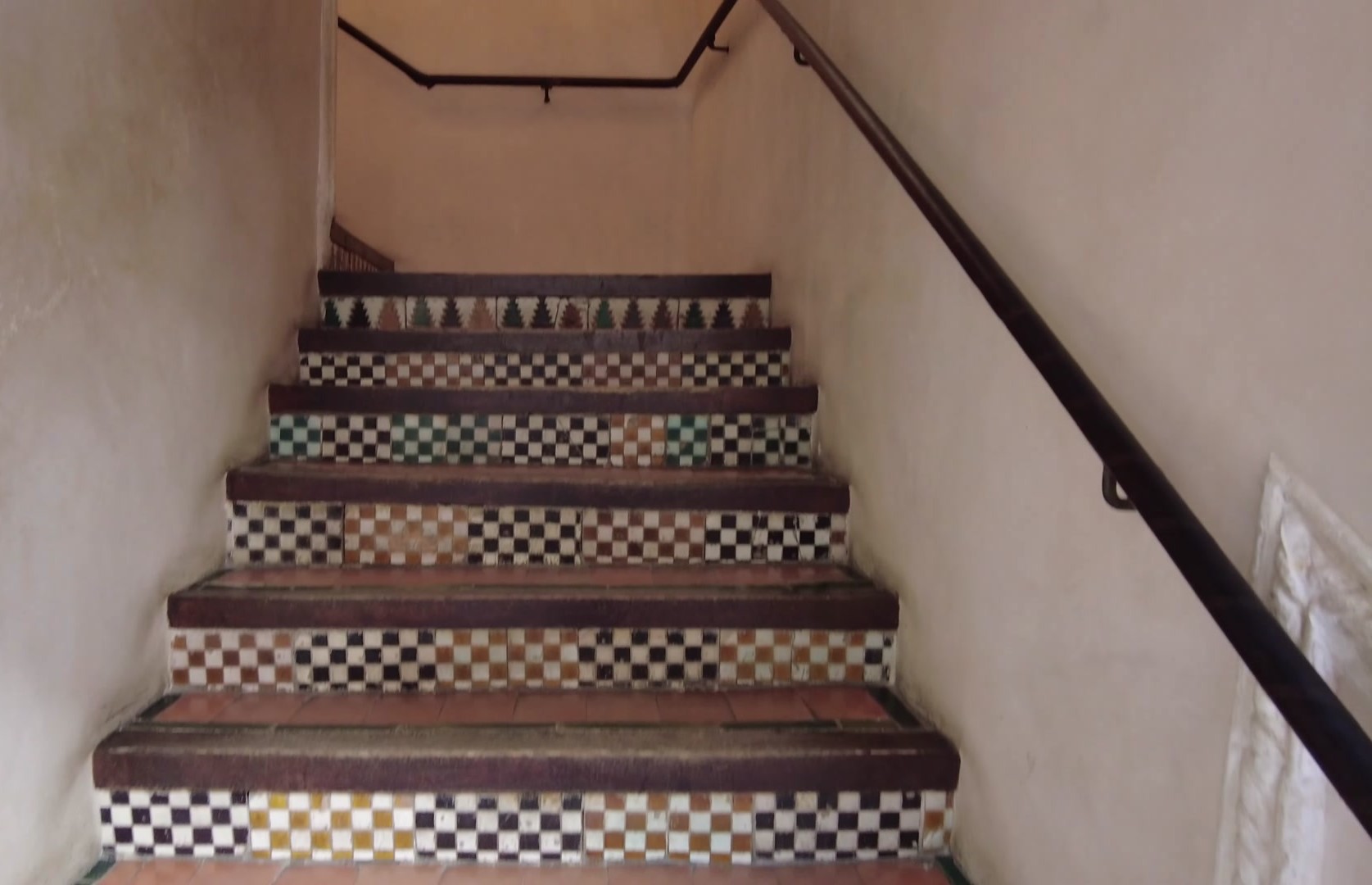


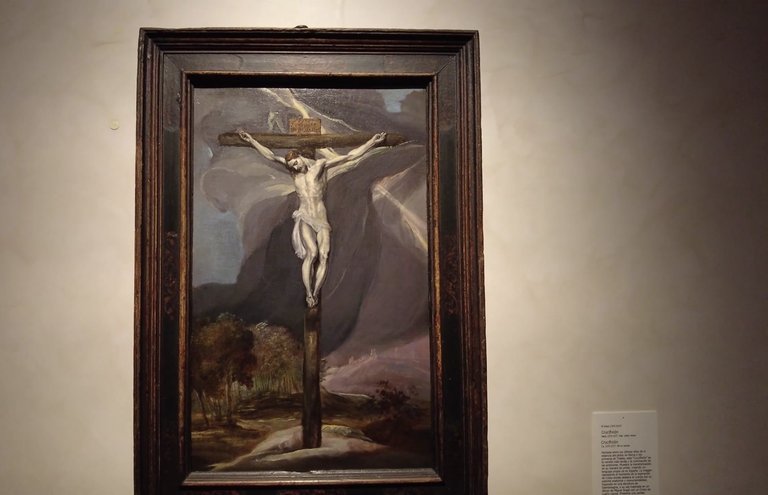






Across from the museum, there is a hotel named after El Greco. I dined at the restaurant here and had a remarkable experience. Chef Victor Sánchez Beato runs the restaurant, which offers a modern and creative dining concept. With only 15 seats in a bar setting, the restaurant operates in a Chef’s Table format, where the chef and two assistants prepare dishes directly in front of the guests.

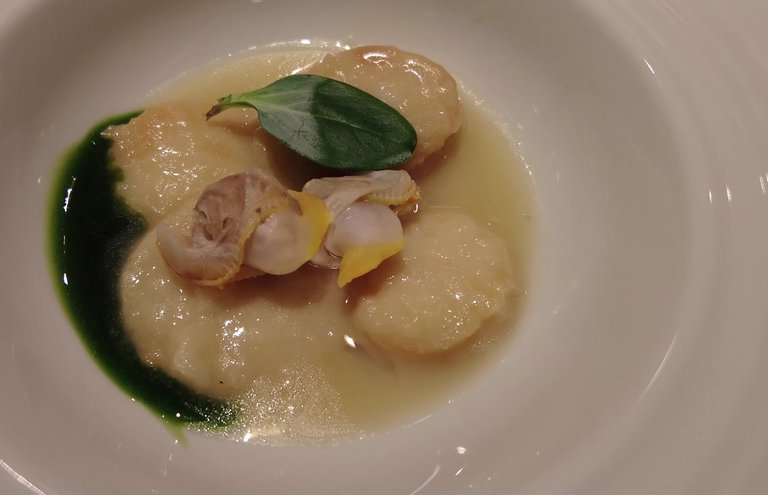
The dining experience was impressive from start to finish. The local bread, olive oil and volcanic salt trio served as a starter were particularly memorable. The main courses were equally outstanding. The miso-glazed trout with pumpkin and orange purée and the perfectly cooked venison fillet were both exceptional. For dessert, a fondant filled with marzipan provided a delightful local touch. The prices were surprisingly reasonable. The menu costs only 55 eıros and the wines, despite being affordable, were of excellent quality.

If you ever visit this area, I highly recommend both the El Greco Museum and Victor Sánchez Beato’s restaurant.



